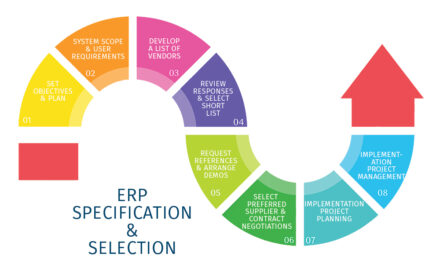A personal loan is a sum of money lent to an individual by a bank or a private lender. It is often unsecured and comes with a set interest rate. The borrower must agree to the loan rate and terms and make monthly payments on time until the loan is entirely repaid. A personal loan can be utilized for a variety of purposes, including debt consolidation, medical costs, and significant purchases. To repay the loan, the borrower typically pays fixed monthly installments of principal and interest. Because the interest rate on a personal loan is generally lower than that on a credit card, it is frequently a more reasonable alternative. In this blog, you will come across the Guide on the basics of personal loans.
How to Apply for a Personal Loan?
Once you’ve decided to acquire a personal loan, you’ll need to get your documentation in order and make sure your credit is in good shape. Many lenders will begin with a pre-qualification procedure that includes a mild credit check on you.
To pre-qualify, you must enter certain personally identifying information (such as your Social Security Number and date of birth), income statistics, the reason you need the cash, the amount you want to borrow, and the length of time you need to repay the loan. While pre-qualifying does not guarantee loan approval, it does allow you to view the possible interest rate.
What Exactly Is a Personal Loan?
A personal loan is a sum of money lent to an individual by a bank or a private lender. It is often unsecured and comes with a set interest rate. The borrower must agree to the loan rate and terms and make monthly payments on time until the loan is entirely repaid. A personal loan can be utilized for a variety of purposes, including debt consolidation, medical costs, and significant purchases.
Personal Loans: How Do They Work?
Personal loans function by granting money to borrowers who fulfill specific criteria stipulated by the lender. To repay the loan, the borrower typically pays fixed monthly installments of principal and interest. Because the interest rate on a personal loan is generally lower than that on a credit card, it is frequently a more reasonable alternative.
Personal Loan Lender Comparison
The most significant factors to consider when choosing a personal loan lender are the loan’s prices and conditions, the time it takes to apply, and how fast you may be accepted and financed. Pay particular attention to the following considerations when comparing personal loan lenders:
- Personal loan rates and fees are the most important elements to consider when selecting a lender. The loan’s APR, which reflects the yearly cost of the loan, includes interest rates and fees. The better your credit, the cheaper your interest rate.
- Shorter repayment durations result in bigger payments and typically cheaper interest rates. This implies that you can lower your overall borrowing expenses by selecting the shortest payback period available.
- The application procedure is critical to think about the lender’s application process. You might receive a loan through your local bank or credit union, which is a terrific alternative. Keep in mind, however, that some small lenders may not provide automated systems or online forms, making the application procedure more time-consuming.
Conclusion
Pritish Kumar Halder is also referred to by the name Pritish K Halder across the community of technological experts. He has worked in the field for the past twenty years, creating a remarkable presence in the field of information. Here Pritish Halder has shared information on personal loan lending and more.












Untuk mereka yang ingin menguruskan badan tanpa diet, pola hidup sehat melalui olahraga teratur, tidur yang cukup, makan seimbang, hingga teknik mindfulness bisa menjadi solusi. Jangan lupakan juga faktor stres dan pentingnya hidrasi. Akar rambut yang kuat adalah kunci untuk mencegah kerontokan, dan ini bisa didukung dengan cara alami seperti menggunakan ramuan tradisional, minyak zaitun, makanan yang kaya nutrisi, pijat kepala, dan juga memperhatikan kebiasaan sehari-hari seperti penggunaan cat rambut.
Find Your Dream Home – Bali Villas for Sale
Find the Perfect Bali Villa Today
Luxury Living in Bali – Villas for Sale
Invest in an Exclusive Bali Villa
Superb Bali Villas For Sale
Invest in Bali real estate
Dream of living in paradise
Live the Bali Dream – Villas for Sale
Experience a Once in a Lifetime Vacation in Bali
The Perfect Getaway with Stunning Bali Villas for Sale
Find Your Dream Home in Paradise with Bali Villas for Sale
Hello. And Bye.
Incredible Villas for Sale in Bali
Villa for Sale in Bali
Lifestyle Villas in Bali for Sale
Bali Properties for Sale
Luxury Bali Villa Deals
6 Prime Villas for Sale in Bali
Luxury Homes for Sale in Bali
Beautiful Bali Villas for Sale
Explore Your Options in Bali Real Estate
A perfect investment opportunity in Bali villas
Beautiful Bali Villas – Let Your Vacation be Even Better
Download Pari Now – Risk Free
Gorgeous Homes At Amazing Prices
Discover Exceptional Properties in Bali
Bali Real Estate for Sale – Get The Best Deals Now!
Real Estate for Sale in Bali, Indonesia
Dream Vacation Home for Sale on Bali
A Guide to Bali Real Estate for Sale
Find the Perfect Bali Property Now
Experience Bali With A Perfect Home
Establish new life in a Bali real estate paradise
Great Deals and Opportunities for Property Investment
Find Your Perfect Property in Bali
Experience Unforgettable Casino Action at Carnival Glory
Carnival Glory Casino: The Place to Be
Useful article, thank you. Top article, very helpful.
Start Winning at Glory Casino
Experience the Thrill of Glory Casino
Enter the World of GLORY CASINO
Unlock the Best Gambling Adventure at Glory Casino
It’s Time To Shine At GLORY CASINO
Catch the thrill at Glory Casino
Join GLORY CASINO , Get Lucky!
Feel the Rush of the Games at Glory Casino
The Magic of GLORY CASINO
Boost Your Bankroll at Glory Casino
Artificial Intelligence: What Can We Expect in the Future?
Experience Unrivalled Casino Fun with GLORY CASINO
Выигрыш в казино GLORY CASINO
Discover the Joy of Gambling at Glory Casino
Experience Revolutionary Gambling with Sahabet
Experience Incredible Innovations with Sahabet Online Betting
Sahabet – Revolutionizing the Online Betting World
Try Sahabet for Exciting Online Betting
Sahabet: The Online Betting Revolution
Sahabet – Innovating the Way We Bet Online
Maximizing Your Online Betting Experience with Sahabet
Revolutionize Your Online Betting With Sahabet
Sahabet
Enjoy Bigger Bonanzas with Sahabet’s Revolutionizing Online Betting
Best best best..
Maximize Your Gains at Online Casino Canada
Thrills Await at Online Casino Canada
Play Now and Win at Online Casino Canada
Best Online Casino in Canada for Win Real Money
Play Great Online Casino Games in Canada
DreamHost: DreamHost is a well-established hosting provider, known for its solid uptime and fast-loading websites. They offer a wide range of hosting options, including shared, VPS, and dedicated hosting.
Siteground: Siteground is known for its exceptional speed and advanced security features. They provide excellent customer support, automatic backups, and a user-friendly interface. [url=http://webward.pw/]http://webward.pw/[/url].
AI’s Impact on Technological Change
Finding the Best Tutorials and Tips
Thnnnxxx.
Get free spins for best roulette games
a dragons story online slot [url=bestenroulette.com]bestenroulette.com[/url].
Thnx for share.. Very best post. Ty.
Get the perfect villa in Bali
Buying a villa in Bali
Beautiful Villas for Sale in Bali
Beach Villas for Sale in Bali
Fantastic Bali Villa for Sale with Year Round Sun
real money online casino [url=online-casino-won.com#online-slots]live dealer games[/url].
pimple treatment laser [url=best-lip-filler.com]best-lip-filler.com[/url].
online casinos with no deposit [url=casinope-online.com/casino-reviews/no-deposit-casinos]online casinos with no deposit[/url] .